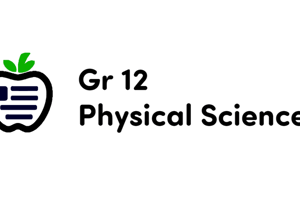Podcast
Questions and Answers
A triangular prism has sides of 15 inches and 20 inches, and a length of 30 inches. What is the area of one of the triangular faces?
A triangular prism has sides of 15 inches and 20 inches, and a length of 30 inches. What is the area of one of the triangular faces?
150 square inches
A triangular prism has dimensions as shown in the image. What is the area of the bottom rectangular face?
A triangular prism has dimensions as shown in the image. What is the area of the bottom rectangular face?
450 square inches
A triangular prism has a rectangular face with sides measuring 30 inches and 20 inches. What is the area of this face?
A triangular prism has a rectangular face with sides measuring 30 inches and 20 inches. What is the area of this face?
600 square inches
A triangular prism has a rectangular face with sides of 30 inches and 25 inches. What is the area of this face?
A triangular prism has a rectangular face with sides of 30 inches and 25 inches. What is the area of this face?
What is the surface area of the triangular prism shown in the image?
What is the surface area of the triangular prism shown in the image?
If the height of a triangular face of the prism is doubled, how much does surface area increase?
If the height of a triangular face of the prism is doubled, how much does surface area increase?
If the length of the triangular prism is halved, how much does the surface area decrease?
If the length of the triangular prism is halved, how much does the surface area decrease?
How does doubling all dimensions of the triangular prism affect its surface area?
How does doubling all dimensions of the triangular prism affect its surface area?
What is the perimeter of the triangular face of the triangular prism?
What is the perimeter of the triangular face of the triangular prism?
A smaller, similar triangular prism has dimensions scaled down by half. What is the surface area of the smaller prism?
A smaller, similar triangular prism has dimensions scaled down by half. What is the surface area of the smaller prism?
If you increase the base of the triangle by 50% but keep the height the same, what will the new surface area of the triangles be?
If you increase the base of the triangle by 50% but keep the height the same, what will the new surface area of the triangles be?
What is the total area of the triangular faces of the prism?
What is the total area of the triangular faces of the prism?
If you wanted to paint the prism, how much surface area in square inches would you need to cover?
If you wanted to paint the prism, how much surface area in square inches would you need to cover?
If you double the length of the prism, how much would the surface area of the rectangle between the two triangular faces change?
If you double the length of the prism, how much would the surface area of the rectangle between the two triangular faces change?
The triangular prism can be 'unfolded' into a net consisting of rectangles and triangles. How many rectangles are in the net?
The triangular prism can be 'unfolded' into a net consisting of rectangles and triangles. How many rectangles are in the net?
Compare the sum of the areas of the two triangular faces to the area of the bottom rectangular face. Which is larger?
Compare the sum of the areas of the two triangular faces to the area of the bottom rectangular face. Which is larger?
If one of the 15 inch sides of the triangle was increased to 20 inches. How would the surface area and perimeter of the triangles change?
If one of the 15 inch sides of the triangle was increased to 20 inches. How would the surface area and perimeter of the triangles change?
A modified prism is formed by reducing the 30 inch length by 10 inches. What is the resulting surface area of the bottom rectangle?
A modified prism is formed by reducing the 30 inch length by 10 inches. What is the resulting surface area of the bottom rectangle?
What would you use to measure the sides of the triangular prism?
What would you use to measure the sides of the triangular prism?
If the triangular prism was instead a rectangular prism with dimensions 15x20x30. What would the surface area be?
If the triangular prism was instead a rectangular prism with dimensions 15x20x30. What would the surface area be?
Flashcards
Surface area
Surface area
The total area of all the faces and curved surfaces of a solid figure.
Prism
Prism
A solid geometric figure whose two end faces are similar, equal, and parallel rectilinear figures, and whose sides are parallelograms.
Triangular prism
Triangular prism
A prism with triangular ends.
Area of a triangle
Area of a triangle
Signup and view all the flashcards
Area of a rectangle
Area of a rectangle
Signup and view all the flashcards
Surface area of rectangular faces
Surface area of rectangular faces
Signup and view all the flashcards
Surface area of triangular faces
Surface area of triangular faces
Signup and view all the flashcards
Surface area of the triangular prism
Surface area of the triangular prism
Signup and view all the flashcards
Study Notes
- Tension is a pulling force exerted by a rope, string, cable, or similar object on another object.
- Tension acts along the length of the rope and is directed away from the object it is attached to
Tension in a Rope
- Tension is the force exerted by the rope on the block.
- Tension is the same throughout a massless, inextensible rope.
- Tension can vary along the rope if the rope has mass.
- Tension may not be the same throughout the rope if the rope is accelerating.
Example 1
- A block of mass ( m ) is attached to a rope.
- It is pulled horizontally with a force ( F ).
- The tension in the rope is ( T = F ).
Example 2
- A block of mass ( m ) hangs vertically from a rope.
- The tension in the rope is ( T = mg ).
- Here, ( g ) means acceleration due to gravity.
Example 3
- Two blocks of masses ( m_1 ) and ( m_2 ) are connected by a rope over a pulley.
- The equations of motion for the blocks are ( T - m_1g = m_1a ) and ( m_2g - T = m_2a ).
- Acceleration ( a = \frac{m_2 - m_1}{m_1 + m_2}g ).
- Tension ( T = \frac{2m_1m_2}{m_1 + m_2}g ).
Example 4
- A block of mass ( m ) is on an inclined plane with an angle ( \theta ).
- The block is attached to a rope and is in equilibrium.
- The tension ( T = mg\sin\theta ).
- The normal reaction ( N = mg\cos\theta ).
Example 5
- A car with mass ( m_1 ) pulls a trailer with mass ( m_2 ) using a rope.
- The force exerted by the car is ( F ).
- The acceleration ( a = \frac{F}{m_1 + m_2} ).
- The tension in the rope ( T = m_2\frac{F}{m_1 + m_2} ).
Studying That Suits You
Use AI to generate personalized quizzes and flashcards to suit your learning preferences.




